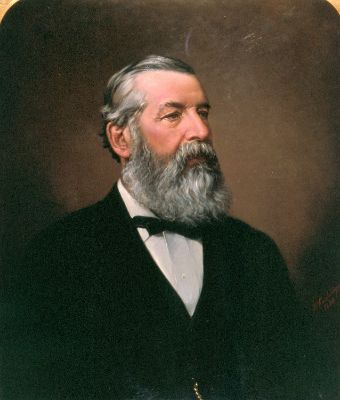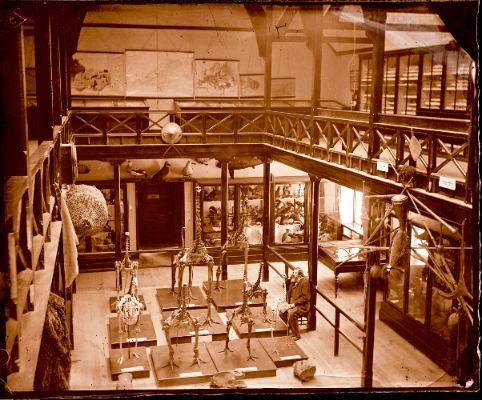Museum Founder’s Life And Career Examined On His 200th Birthday
Researchers will examine the life and career of Canterbury Museum founder Sir Julius von Haast this weekend in an online symposium celebrating the 200th anniversary of his birth.
Haast Symposium: Celebrating the Life of Sir Julius von Haast will feature 10 digital presentations by researchers from New Zealand and Austria.
Topics include Haast’s correspondence, his relationships with museums and scientific societies in Europe, the 1,142-page biography authored by his son and his dubious claim to have discovered the West Coast pass that bears his name today.
Haast was born on 1 May 1822 in Bonn, a town in modern Germany that was then part of the Kingdom of Prussia.

He arrived in Aotearoa New Zealand in 1858 to report on the country’s suitability for German immigrants. Within days he met Viennese scientist Ferdinand Hochstetter, later founding director of the Imperial Natural History Museum in Vienna, and accompanied him on his geological expedition around the country.
Haast became Provincial Geologist to Canterbury in 1861 and was instrumental in the founding of Canterbury Museum in 1867. His personal collection formed the bulk of the Museum’s early displays.
He was Director of Canterbury Museum from 1868 until his death in Christchurch in 1887. He was also the newly-formed Canterbury College’s first geology professor and a founding member of Philosophical Institute of Canterbury – later the Canterbury Branch of the Royal Society of New Zealand Te Apārangi.
The Haast Symposium is organised by a committee comprising Alexander Turnbull Library Research Librarian Dr Sascha Nolden, geologist and former Te Ara Science Editor Simon Nathan, art historian and science editor George Hook, and Canterbury Museum Senior Curators Julia Bradshaw and Dr Paul Scofield.

Dr Nolden says the symposium is a chance to examine Haast’s legacy and learn more about the man himself.
“Sir Julius von Haast was the most highly decorated and internationally acclaimed German-born New Zealand scientist of the nineteenth century, and one of the great pioneers of the study of our extinct birds.
“He was a very typical nineteenth century scientist in that he wasn’t really a specialist, he applied himself across a very broad spectrum of scientific disciplines. This conference is an opportunity to shed some new light on aspects of his life as well as the scientific context he was operating in.”
Dr Paul Scofield says Canterbury Museum is Haast’s legacy.
“Haast worked tirelessly to build this Museum and its collections, and in his lifetime it was the most highly-regarded museum in the Southern Hemisphere. We still occupy the buildings Haast organised to be built, and our storerooms and displays are packed with objects he collected. It was a huge legacy to leave to Canterbury.”
The Haast Symposium takes place online from 9.00 am to 1.00 pm on Saturday 30 April and Sunday 1 May. Tickets and the symposium programme are available from Canterbury Museum’s website.


 Democratic Voice of Burma: The Resilience And Hope Of Myanmar’s People On Screen In Auckland Sat April 5
Democratic Voice of Burma: The Resilience And Hope Of Myanmar’s People On Screen In Auckland Sat April 5 NZSEG: Powering The Future - NZSE College And Royal New Zealand Navy Forge Educational Partnership
NZSEG: Powering The Future - NZSE College And Royal New Zealand Navy Forge Educational Partnership Courtney Duncan: Illness Prevents Duncan From Contesting First Round Of 2025 World Women’s Motocross Championship
Courtney Duncan: Illness Prevents Duncan From Contesting First Round Of 2025 World Women’s Motocross Championship GPNZ: Extended Skill Mix In Primary Care Teams Improves Patient Access And Outcomes
GPNZ: Extended Skill Mix In Primary Care Teams Improves Patient Access And Outcomes New Zealand Symphony Orchestra: Music Legend To Conduct Bach, Beethoven And Mozart With NZSO
New Zealand Symphony Orchestra: Music Legend To Conduct Bach, Beethoven And Mozart With NZSO Ministry of Health: Ministry Of Health To Look Further At Waikato Hospital Event
Ministry of Health: Ministry Of Health To Look Further At Waikato Hospital Event